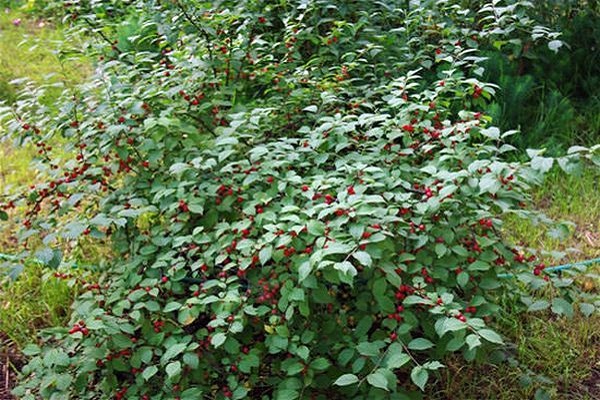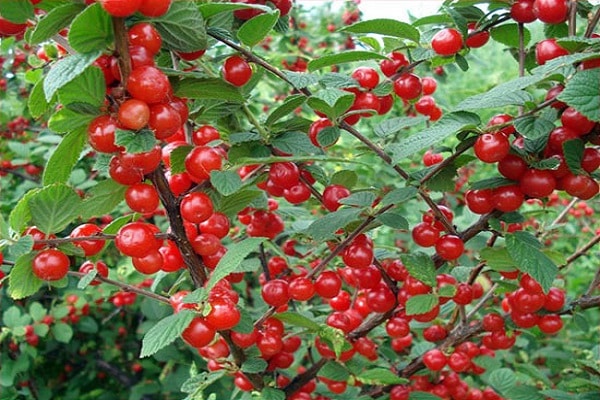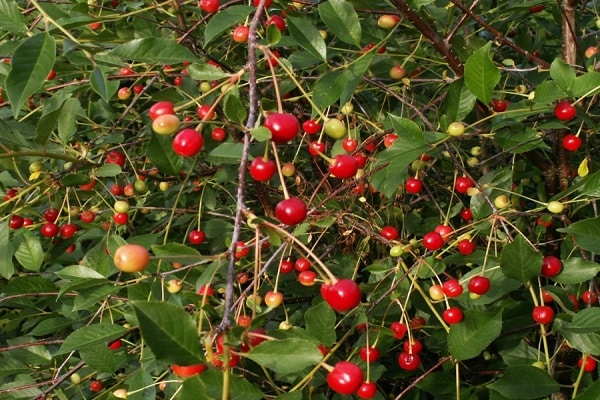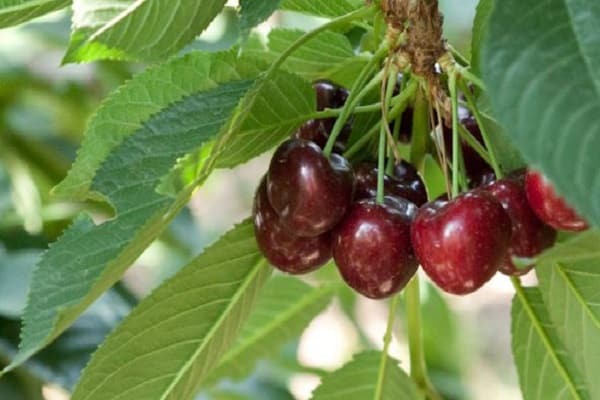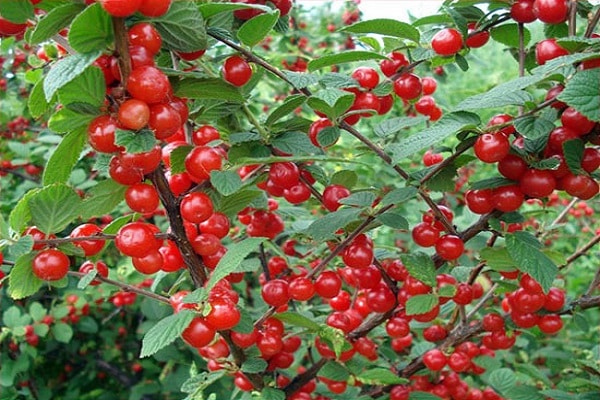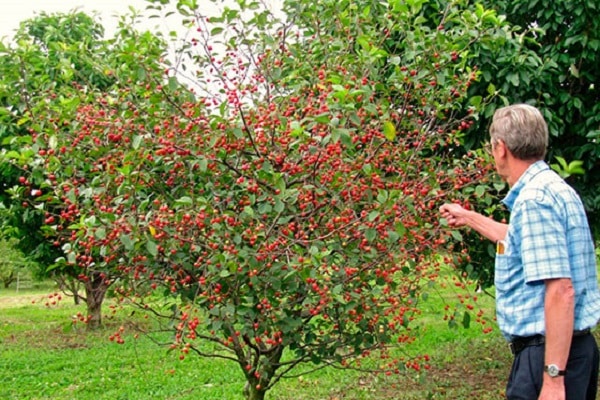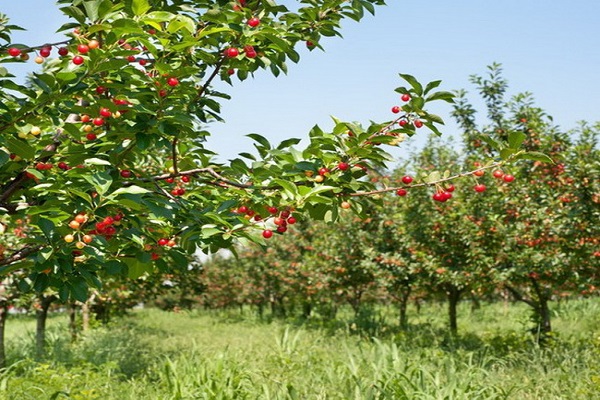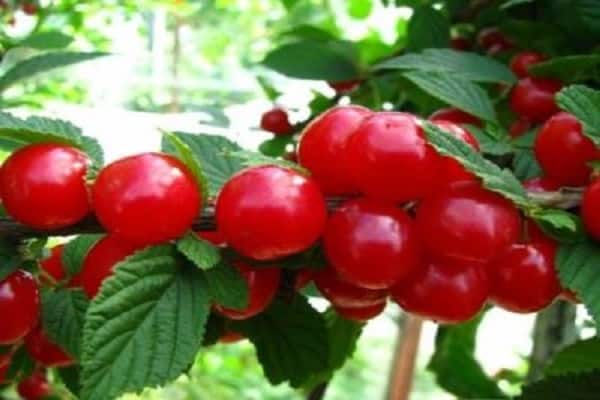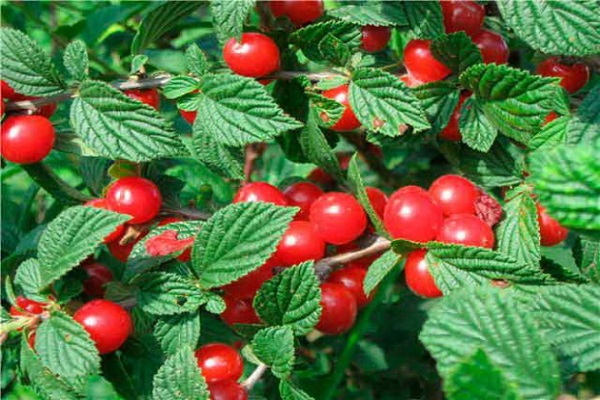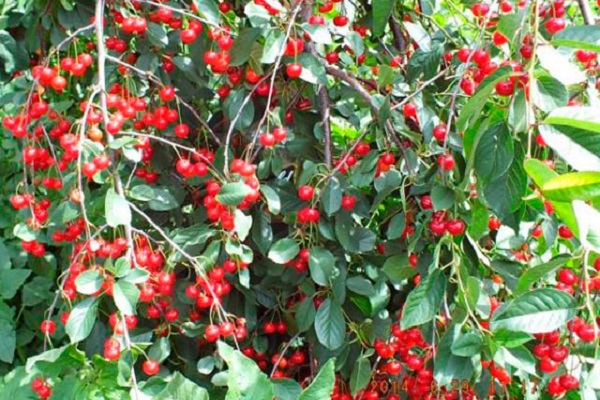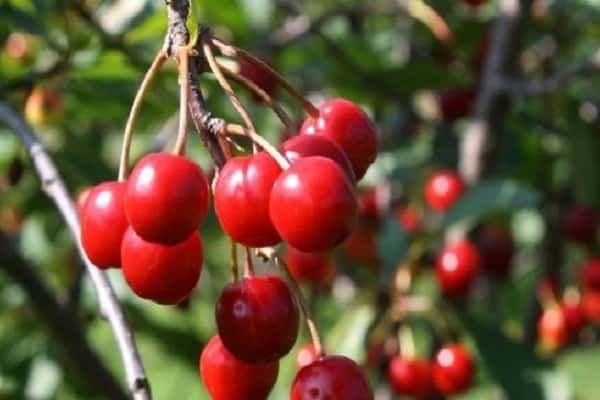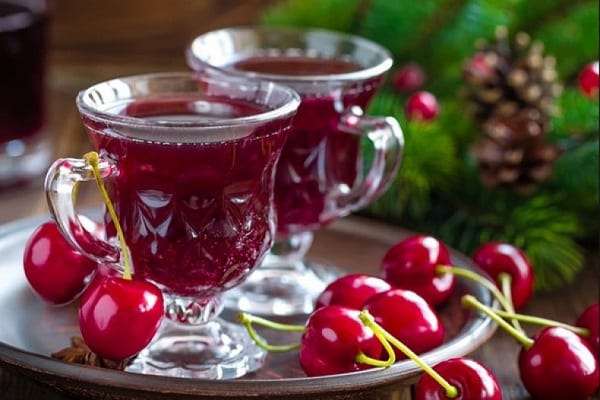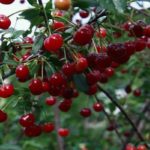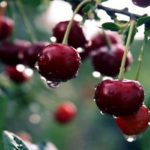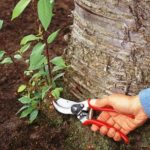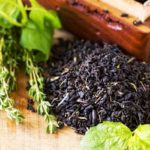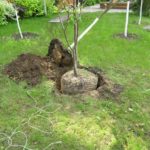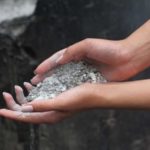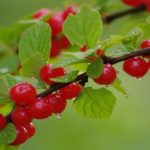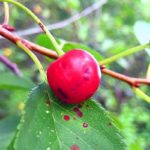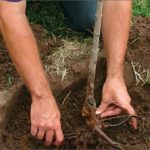The insufficient territory of a personal plot forces gardeners to more carefully plan plantings and select garden crops. If space is limited, experts advise paying attention to varieties of dwarf cherries. Despite its small size, such a tree can surprise you with its yield, but to do this you need to know about the peculiarities of its cultivation.
Features of dwarf cherry
Dwarf cherry grows from 1 to 1.5 meters in height. Thin spreading branches give it the appearance of a bush.The leaves are small in size and shape; they grow no more than 5 cm and have a pointed end. The flowering period of dwarf cherries lasts from 2 to 3 weeks and, unlike traditional varieties, is accompanied by a rich aroma.
The berries of the dwarf tree can be from light to dark red, some varieties become almost black when ripe. The diameter of the fruit is on average 1 cm, and the average weight is no more than 5 g. A distinctive feature of low-growing trees is the early period of yield and its high yield. They can reach 10-12 kg, which is ensured by the density of the berries on the branches.
Advantages and disadvantages
The main advantages of dwarf cherries are the compactness of the plant and the quality of fruiting. In terms of usefulness, they are not inferior to ordinary cherries. The advantages include the following:
- good tolerance to sudden temperature changes;
- frost resistance;
- high survival rate;
- good disease resistance;
- ease of picking berries;
- early harvest.
Growing dwarf cherries does not require much skill, so even novice gardeners can do it. Thanks to the strength of the branches, the tree is not afraid of strong winds and drafts. A well-developed root system allows the plant to survive in places with close groundwater. High yields allow the use of low-growing varieties for industrial cultivation.
The disadvantages of dwarf cherries include the small size of the berries. Some note the lack of sweetness of the fruits and their insufficient fleshiness.For planting, you need to choose the right variety and take into account the growing conditions, and the lack of pollinators for ordinary dwarf cherries is fraught with a decrease in yield.
The best varieties
Many years of work by breeders have made it possible to obtain a wide variety of varieties, so low-growing varieties are presented on the market in a wide variety. At the same time, there are representatives of dwarf trees that have won the love and recognition of Russian gardeners. For planting in the Moscow region, the best varieties are considered:
- Chocolate girl;
- Anthracite;
- Quick.
Winter pomegranate belongs to the category of new varieties; it was obtained by crossing steppe and sandy varieties of cherries. The goal of the selection was to obtain a variety that is resistant to weather changes, so the plant can easily tolerate hot weather and frost. The peculiarity of the variety is strong branches and straight growth of shoots.
The first opportunity to get a harvest can be expected in the 2-3rd year, the indicators of which increase gradually, and in the 7th year up to 8 kg of fruits are harvested. Ripening occurs in mid-August, but the fruits can remain on the branch until the end of September. The weight of the bright burgundy berry is 4 g.
Cherry Businka is a variety with a medium ripening period. The average weight of the berries is 3.5 g. The peculiarity is the color of the fruit, which is black. Winter-hardy cherries grow on average up to 3 m. The advantage of the plant is its high yield and versatility in the use of berries. The crop, when grown industrially, shows a yield of 8 t/ha. The fruiting period falls in mid-July.
Growing principle
The tree should be planted in a well-lit place, since cherries require sufficient light. It is recommended to choose the south side of the garden; the elevation of the area is not an obstacle. Low-growing trees do not respond well to even slight shade, so despite their short stature, they should not be planted under large trees.
It is undesirable to be near coniferous trees near cherries; they are carriers of infections dangerous to them.
To avoid disappointment, the plant should be purchased from specialized nurseries. The following rules should be followed:
- choose a one- or two-year-old plant for planting, as they are acclimatized and have a sufficient degree of hardiness;
- carefully examine the roots, removing dry shoots;
- before planting, perform the soaking procedure for 10 hours in water or in a growth-stimulating solution;
- Planting should be carried out in previously prepared soil; enrichment with manure and fertilizers should be carried out in the fall.
Sandy loam soil is considered ideal for growing low-growing species, since it is characterized by sufficient looseness and easily allows air and water to pass through. The depth of the dug hole should be equal to 1⁄2 the height of the seedling. After planting, the soil needs to be moistened with 2 buckets of warm water.
Care
Caring for dwarf cherries is standard and does not require much time or effort. For successful cultivation, it is important to control watering and trim branches in a timely manner. Moisturizing is carried out as needed, increasing it during the dry season and at the time of ripening of the berries. During prolonged rains, loosening the soil is required. This will allow excess moisture to drain away in a timely manner and eliminate the risk of water stagnation.
Before flowering begins, a tree inspection is required.If there are frozen, dried shoots, you need to remove them using pruners. Pruning is carried out in early spring before the sap begins to flow. Such actions help to enhance the growth of shoots and make it possible for the tree to grow stronger during flowering. Autumn removal of branches is carried out only when absolutely necessary.
For better fruiting, it is recommended to periodically fertilize with fertilizers. The first is carried out before flowering begins after bud formation. After the flowers bloom, it is permissible to add organic matter. In the autumn, after harvesting, mineral fertilizers in the form of potassium, phosphorus and calcium are added to the soil.
Diseases and pests
Dwarf cherry species are resistant to pests and various diseases of fruit trees. Most often they are subject to fungal infections, so it is necessary to periodically inspect them for their presence. Plantings may suffer from the following diseases:
- moniliosis;
- various types of spotting;
- scab.
Dwarf trees are often subject to aphid infestations. The greatest danger threatens seedlings when new leaves and young shoots appear. To common cherry pests include worms, moths, fruit mites.
Fighting methods
Among the common fungal cherry diseases include moniliosis, which is often called a monilial burn. It is easy to determine when the plant is flowering. If it is present, dry rot begins to form on the branches, they dry out, and the tree may completely die. Symptoms of damage are observed in the following sequence:
- outbreaks appear that resemble the effects of fire;
- gray growths form on the bark;
- the berries are covered with gray rot;
- branches crack and die.
To combat moniliosis, fungicides are used - “Oleocuprit”, “Kaptan”, “Kuprozan”. Before treatment, the affected areas and fruits are removed. One procedure may not be enough, in which case the manipulations are repeated.
Cherry plantings may suffer from brown or hole spotting. The disease manifests itself in the form of dark, brown or yellowish spots, in place of which holes form over time. The leaves begin to dry out and fall off. They fight this disease with a 1% solution of copper sulfate or Bordeaux mixture. The latter is also used for scab.
To prevent infection of plantings by aphids, they are sprayed with special preparations, of which there are quite a lot on the market for gardening products today. The treatment is done until the buds open. Good results are obtained when using Nitrafen or Olekuprit. At the first signs of the presence of larvae on the plant, the plantings are sprayed before the buds open. Immediately before flowering begins, the work is repeated using Karbofos.
During the gardening season, if necessary, insecticide treatment is carried out repeatedly.
Prevention
Prevention of diseases and pests is compliance with planting rules and timely removal of affected branches and fruits. The first preventive spraying is carried out after the pruning procedure, using a 1% vitriol solution for this purpose. To prevent diseases, the lower part of the shoots is whitened with lime. Spraying with a urea solution prepared from 700 g of the drug and 10 liters of water will help protect the tree from pests that have spent the winter season in the bark.
When using Bordeaux mixture, the following spraying times should be observed:
- the first - until the buds open;
- the second - after the end of flowering;
- third - no later than 3 weeks before the start of berry picking.
Spraying with Zircon or Ecoberin will help increase the tree's resistance to various pests.

